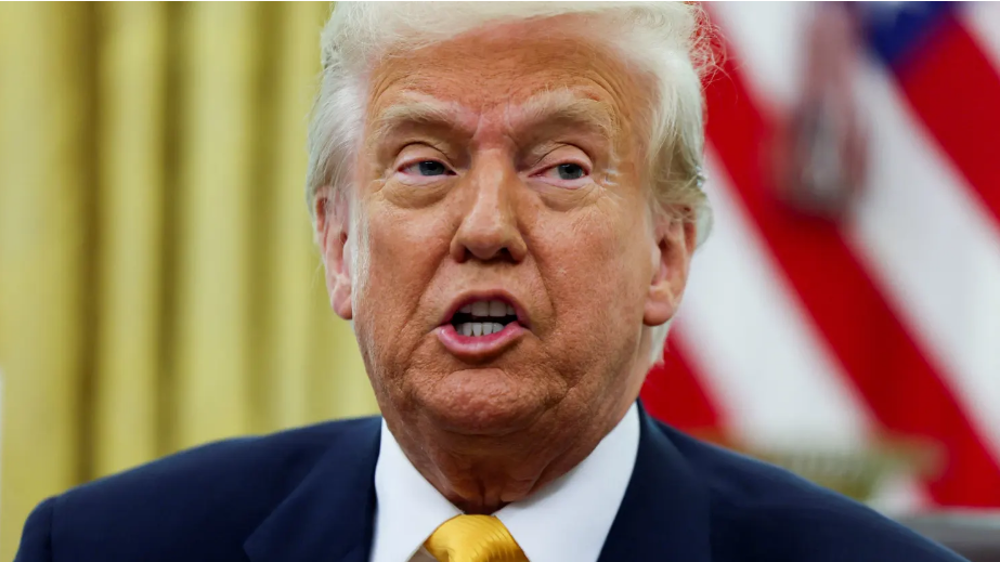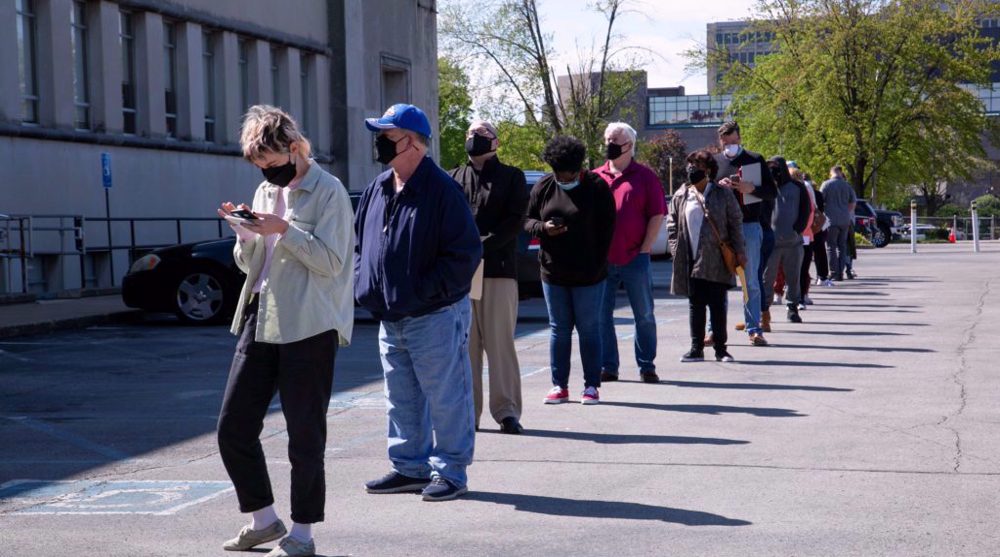US job growth takes a giant step back as Delta variant hits restaurants
The US economy created the fewest jobs in seven months in August as hiring in the leisure and hospitality sector stalled amid a resurgence in COVID-19 infections, which weighed on demand at restaurants and hotels.
But other details of the Labor Department's closely watched employment report on Friday were fairly strong, with the unemployment rate falling to a 17-month low of 5.2% and July job growth revised sharply higher. Wages increased a solid 0.6% and fewer people were experiencing long spells of unemployment.
This points to underlying strength in the economy even as growth appears to be slowing significantly in the third quarter because of the soaring infections, driven by the Delta variant of the coronavirus, and relentless shortages of raw materials, which are depressing automobile sales and restocking.
"It is important to keep the right perspective," said Brian Bethune, professor of practice at Boston College. "Given the supply chain constraints and the ongoing battle to lasso COVID-19 to the ground, the economy is performing exceptionally well."
The survey of establishments showed nonfarm payrolls increased by 235,000 jobs last month, the smallest gain since January. Data for July was revised up to show a whopping 1.053 million jobs created instead of the previously reported 943,000.
Hiring in June was also stronger than initially estimated, leaving average monthly job growth over the past three months at a strong 750,000. Employment is 5.3 million jobs below its peak in February 2020. Economists polled by Reuters had forecast nonfarm payrolls increasing by 728,000 jobs in August.
Though the Delta variant was the biggest drag, fading fiscal stimulus was probably another factor. The response rate to the survey is lower in August and the pandemic has made it harder to adjust education employment for seasonal fluctuations.
The initial August payrolls print has undershot expectations over the last several years, including in 2020. Payrolls have been subsequently revised higher in 11 of the last 12 years.
"The August payroll figures have historically been revised higher in the years since the Great Recession, sometimes significantly, and there's a good chance this effect will occur again this time," said David Berson, chief economist at Nationwide in Ohio.
Employment in the leisure and hospitality sector was unchanged after gains averaging 377,000 per month over the prior three months. Restaurants and bars payrolls fell 42,000 and hiring at hotels and motels decreased 34,600, offsetting a 36,000 gain in arts, entertainment and recreation jobs. Retailers shed 29,000 jobs.
Construction lost 3,000 jobs. There were gains in mining, financial services, information and professional and business services as well as transportation and warehousing.
Manufacturing added 37,000 jobs, led by a 24,100 increase in the automobile industry. Factory hiring remains constrained by input shortages, especially semiconductors, which have depressed motor vehicle production and sales.
General Motors (GM.N) and Ford Motor Co (F.N) announced production cuts this week.
Motor vehicle sales tumbled 10.7% in August.
That, together with raw materials shortages, which are making it harder for businesses to replenish inventories, prompted economists at Goldman Sachs and JPMorgan to slash third-quarter GDP growth estimates to as low as a 3.5% annualized rate from as high as a 8.25% pace. The economy grew at a 6.6% pace in the second quarter.
Government payrolls fell by 8,000 in August as state government education lost 21,000 jobs. August is the start of the back-to-school season, but the Bureau of Labor Statistics, which compiles the employment report cautioned that "pandemic-related staffing fluctuations in public and private education have distorted the normal seasonal hiring and layoff patterns."
Stocks on Wall Street were mixed. The dollar slipped against a basket of currencies. US Treasury prices fell.
Silver linings
Details of the smaller household survey from which the unemployment rate is derived were fairly upbeat.
Household employment increased by 509,000 jobs, enough to push the unemployment rate to 5.2%, the lowest since March 2020 from 5.4% in July. The jobless rates, however, continued to be understated by people misclassifying themselves as being "employed but absent from work." Without this problem, the jobless rate would have been 5.5%.
Even so, a broader measure of unemployment, which includes people who want to work but have given up searching and those working part-time because they cannot find full-time employment, dropped to a 17-month low of 8.8% from 9.2% in July.
Though the participation rate was steady at 61.7%, about 190,000 people entered the labor force last month. Even more encouraging, the number of permanent job losers declined 443,000 to 2.5 million. The number of long-term unemployed dropped to 3.2 million from 3.4 million in the prior month.
They accounted for 37.4% of the 8.4 million officially unemployed people, down from 39.3% in July. The duration of unemployment fell to 14.7 weeks from 15.2 weeks in July.
Economists did not believe the pullback in hiring was enough for the Federal Reserve to back away from its "this year" signal for the announcement of the scaling back of its massive monthly bond buying program, given strong wage growth.
"For the Fed a taper announcement is still likely coming in either November or December," said Michael Feroli, chief US economist at JPMorgan in New York.
The 0.6% jump in average hourly earnings after a 0.4% rise in July boosted annual wage growth to 4.3% in August from 4.0% in the prior month. The increase, led by lower-paying industries, is the result of worker shortages caused by the pandemic. There were a record 10.1 million job openings at the end of June.
There is cautious optimism that the labor pool will increase because of schools reopening and government-funded benefits expiring on Monday. But the Delta variant could delay the return to the labor force by some of the unemployed in the near term.
About 41,000 women, 20 years and older, dropped out of the labor force. The number of people saying they were unable to work because of the pandemic increased 497,000 in August, the first rise since December. There was also a slight rise in the number of people working from home.
(Source: Reuters)

Trump doubles tariffs on Canada’s aluminum, steel to 50%

Trump’s trade war against China to make US more irrelevant on world stage

US considering ‘rare earths’ deal with DR Congo: Report
Iran, Oman foreign ministers discuss US ‘criminal’ aggression on Yemen
Eight of 9 victims of Israeli attack on Beit Lahiya were aid workers
VIDEO | Massive protests grip Seoul as Yoon's now impeachment verdict delayed
VIDEO | CIA asset Graham Fuller
VIDEO | Pakistan vows justice after deadly train attack in Baluchistan region
VIDEO | Spain continues to ship arms to Israel despite announcing suspension
VIDEO | Press TV's News Headlines
Iran welcomes peace treaty between Armenia, Azerbaijan







 This makes it easy to access the Press TV website
This makes it easy to access the Press TV website